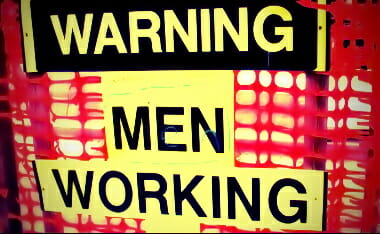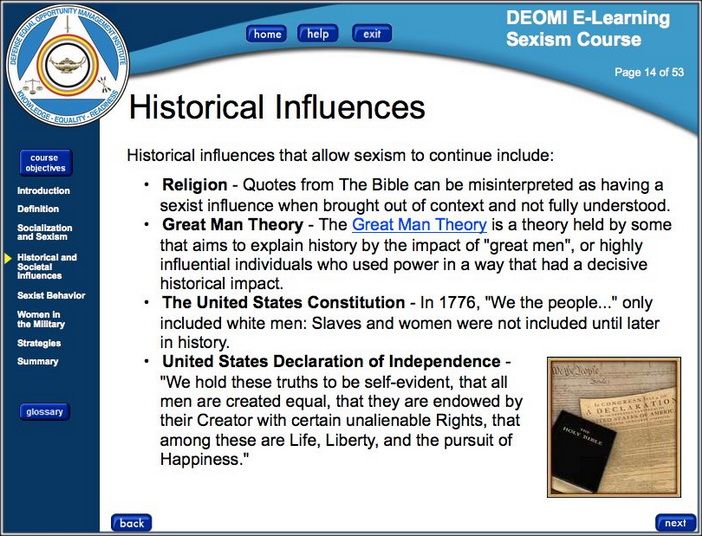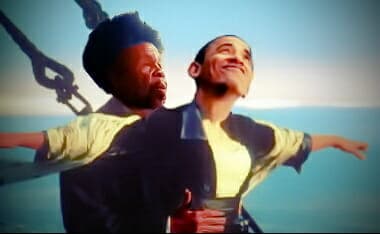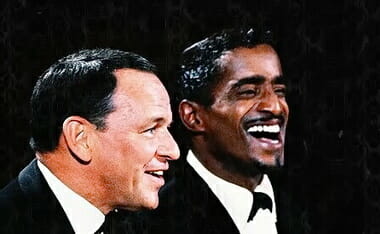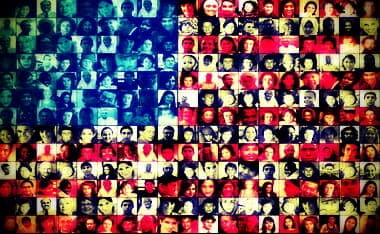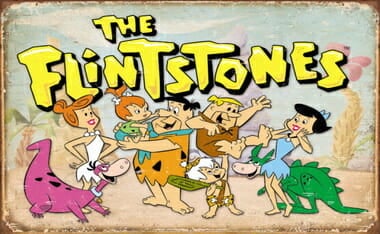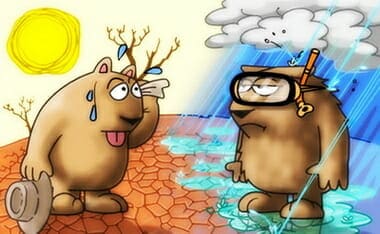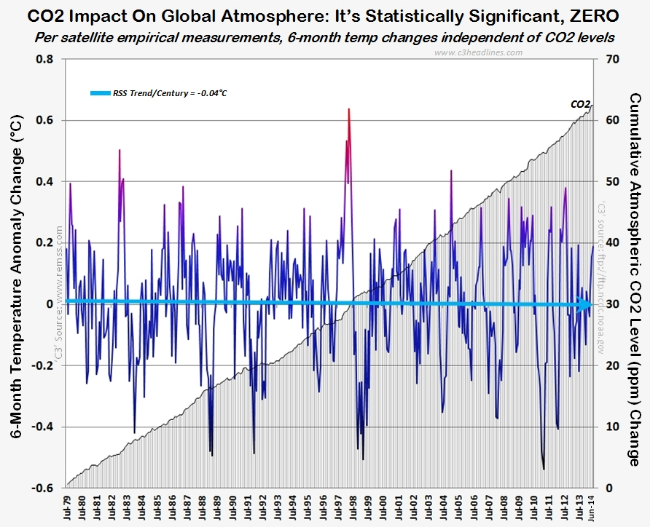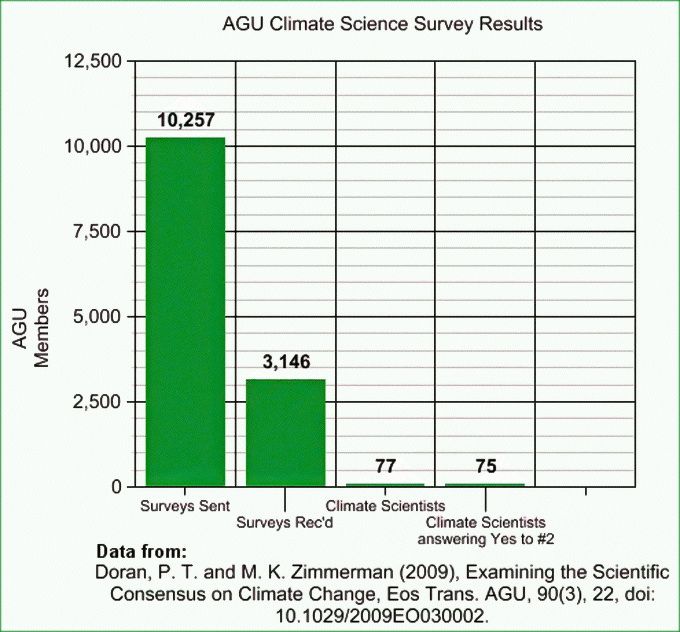This is with a h/t to Rick David via Facebook, and comes by way of The Godfather of Politics:
The Daily Caller reports:
“Those three cherished texts all count as ‘historical influences that allow sexism to continue,’ according to a presentation prepared by the Defense Equal Opportunity Management Institute, whose mission is to give a ‘world-class human relations education.’”
Here’s a screen shot of one of the slides:
Here I will add to some of the good commentary by Godfather from my own chapter via my book where I challenge in-class ideas from a CSUN professor who was a self-proclaimed Gnostic and feminist. In this excerpt I will show that women, for the first time in history, were looked at as EQUAL to men and their endeavor to spread the Gospel message. NO pagan belief system to date allowed such thinking, and this was the basis for the future suffrage movements, coupled with the freedoms enumerated in America’s Founding documents:
Another reason that Christianity succeeded over that of the other ideologies of its day is partly due to – I believe – the high regard given to woman as compared to the pagan religions of the day, Gnosticism included. This topic is dealt with in the book How Christianity Changed the World, by Alvin J. Schmidt. His chapter entitled “Women Receive Freedom and Dignity” is very revealing.[76] [See his image below.] Paul, for instance, had a high regard for women as coworkers, which is amply demonstrated in other letters.[77] Barbara Geller points out that “during the Byzantine era, female leadership was exercised largely within the hierarchical structures of women’s monastic communities.” She continues, however, that,
…the letters of Paul and the Book of Acts suggest that in the earliest phase of emerging Christianity, the opportunities for women were far greater. The closing chapter of Paul’s letter to the church at Rome, following the epistolary conventions of that period, includes greetings and personal commendations. Paul mentions ten women, the first of whom is Phoebe, described in Greek as diakonos and a prostates, correctly translated in the New Revised Standard Version as “deacon” and “benefactor” (Rom 16:1-2). Older translations erroneously rendered these words as “deaconess” and “helper”; thus, generations of translators ignored the plain sense of the text because of their assumption that women could not have exercised significant roles in the early church. Ancient Inscriptions suggest, moreover, that prostates was not only a benefactor or patron, but also frequently the president or head of an association.[78]
As is common, persons today with an agenda misinterpret Scripture to bolster a political position or to live comfortably within their own worldview. Paul, in his letters, interprets the role of women more liberally than his antagonists say he does. Even the Gospels portray women as being more spiritually perceptive than men.[79] So it is hardly surprising that early Christianity proved to have a deep appeal for women, as one scholar observes:
“It is probable that Jesus’ teachings attracted women in part because of the new roles and equal status they were granted in the Christian community. There were many cults in Greece and Rome that were for men only, or at best, allowed women to participate in very limited ways [as prostitutes, for instance, in the fertility cults within ‘goddism’]…. Judaism offered women proselytes a circumscribed place at best, for they were faced with the Jewish restrictions that limited participation in religious functions. While women were not allowed to make up the quorum[80] necessary to found a synagogue, nor to receive the Jewish covenant sign (circumcision), these limitations did not exist in the Christian community.”[81]
The Book of Acts is another indicator of the early church’s emphasis on the important role of women. In fact, Peter’s speech to the Pentecost crowd included portions of the Old Testament book of Joel: “And it shall come to pass in the last days, says God, that I will pour out my spirit on all flesh, your sons and your daughters will prophesy…. And on My menservants, I will pour out my Spirit in those days…” (Acts 2:17-18). In the beginnings of this new church founded by Jesus of Nazareth we find women mentioned at the very beginning of Christianities historical book, Acts. In 1:14 of Acts we find the disciples were constantly in prayer “along with the women and Mary the mother of Jesus.” The first convert in Philippi, for instance, was Lydia, a dealer in purple cloth (Acts 16:14). The Philippi church meets first in her home (Acts 16:40). Then Priscilla is introduced (18:2), who was a Jewish evangelist! Together with her husband, Aquila, she is mentioned four times in Acts, always being the first mentioned.[82] Likewise, In Romans 16:3 we find Paul mentioning first Priscilla and then her husband, Aquila – mentioning that both are equal in Christ: “Greet Priscilla and Aquila, my fellow workers in Christ Jesus.” In fact, Priscilla is always mentioned prior to her husband except for once, another key to the overturning of patriarchal customs up to that point.[83]
Luke makes mention of when Paul visited the evangelist Philip in Caesarea, that he had four daughters who prophesied. Far from Paul and the church being oppressive to women, this type of universality that included women was a departure from both Jewish norms as well Roman norms. The Romans in fact, could have used this early equalizing as being socially subversive to their social order, in this case to the patriarchy. Likewise, the Jewish leaders who rejected Jesus and the teachings of the early church, including Paul at first, severely restricted the role of women.[84] Paul and the other writers of the New Testament telling men that they should cherish their wives (Ephesians 5), that marriage is a financial partnership (I Timothy 5:8), that the husband is to honor his wife (I Peter 3:7), and that the male should be a part of raising their children within the family unit was essentially unheard of until then. In contradistinction, the Gospel of Thomas “is clearly influenced by the kind of Gnosticism we know was prevalent in the second and third centuries, but not in the first.”[85] For example, we find Jesus of the Gospel of Thomas responding to Peter, let’s read:
114: Simon Peter said to them, “Let Mary leave us, for women are not worthy of life.” Jesus said, “I myself shall lead her in order to make her male, so that she too may become a living spirit resembling you males. For every woman who will make herself male will enter the kingdom of heaven.”
“This demeaning view of women was common within Gnosticism, but utterly foreign to the historical Jesus.”[86] The fact that the canonical Gospels were written a century or two earlier than those of Gnosticism is at least a good preliminary indication that they could possibly also be more authoritative. O. C. Edwards agrees:
“It is precisely as history that I find her [Pagels] work most unsatisfactory. Nowhere, for instance, does she give the impression that the basic picture of Jesus given in the New Testament gospels did not arise contemporaneously with the Gnostic portrait, but antedated it by at least a century. As historical reconstructions [go,] there is no way that the two can claim equal credentials.”[87]
To ignore the century before Gnosticism started, seems to me, like a tell in poker. That is when the opposing player does something or makes an odd move to show the other players that he or she is bluffing, verbal or not. In this case, the total disregard for pre-Gnostic history and roots is telling.
FOOTNOTES
[76] The following list, “The Role and Status of Women” (Grand Rapids, MI: Zondervan, 2004), 120-121.
[77] Dale & Sandy Larsen, 7 Myths about Christianity (Wheaton, IL: InterVarsity Press, 1998), see chpt. 2, “Christianity Suppresses Women”; also all one has to do is read 1 Corinthinas 7:1-16, here Paul puts the male and female on equal terms and status, unheard of in the ancient pagan world… until that is, the New Testament and the Christian community. In fact, Wayne Grudem makes this new distinction apparent when he points out the role of women in the early church:
Perhaps the best example of a woman well trained in knowledge of the Bible is Priscilla. When Paul went to Corinth, he stayed with Aquila and Priscilla: “because he was of the same trade he stayed with them and worked, for they were tentmakers by trade” (Acts 18:3). Paul stayed a year and six months at Corinth (Acts 18:11), and we may ponder just how much Bible and theology Priscilla would have learned while having the apostle Paul as a house guest and business partner during that time! Then Priscilla and Aquila went with Paul to Ephesus (Acts 18:1819). It was at Ephesus in A.D. 51 that Priscilla and Aquila together “explained” to Apollos “the way of God more accurately” (Acts 18:26). So in A.D. 51 Priscilla knew Scripture well enough to help instruct Apollos. After that, Priscilla probably learned from Paul for another three years while he stayed at Ephesus teaching “the whole counsel of God” (Acts 20:27; compare 1 Cor. 16:19, where Priscilla is called Prisca, and Paul sends greetings to Corinth from Aquila and Prisca and the church that meets “in their house”). By the end of Paul’s three-year stay in Ephesus, Priscilla bad probably received four and a half years of teaching directly from the apostle Paul. No doubt many other women in Ephesus also learned from Paul—and from Priscilla! Aquila and Priscilla went to Rome sometime later (Rom. 16:3, perhaps around A.D. 58), but they returned to Ephesus, for they were in Ephesus again at the end of Paul’s life (in 2 Tim. 4:19, Paul writes to Timothy at Ephesus, “Greet Prisca and Aquila”). Now, 2 Timothy was probably written in A.D. 66 or 67 (Eusebius says that Paul died in A.D. 67), and 1 Timothy a short time before that, perhaps in A.D. 65. In addition, before he wrote 1 Timothy, Paul seems to have been in Ephesus and it seems he had told Timothy to remain there when he left for Macedonia (see 1 Tim. 1:3: “As I urged you when I was going to Macedonia, remain at Ephesus…”). Therefore, both because 1 Timothy is near in time to 2 Timothy, and because Paul had recently been in Ephesus to know who was there before he wrote 1 Timothy or 2 Timothy, it seems likely that Aquila and Priscilla were back in Ephesus by the time Paul wrote 1 Timothy, about A.D. 65. This was fourteen years after Priscilla and Aquila had explained the way of God to Apollos in Ephesus.
Evangelical Feminism: A New Path to Liberalism (Wheaton, IL: Crossway Books, 2006), 175-176.
[78] Michael D. Coogan, ed., The Oxford History of the Biblical World (2001 paperback edition; New York, NY: Oxford University Press, 1998), 429-430.
[79] Compare Mark 4:40 and 6:52 to Mark 5:25-30. See also Mark 7:24-30 and 12:41-44.
[80] “The number of members of a group or organization required to be present to transact business legally, usually a majority.” Random House Webster’s Unabridged CD-ROM Dictionary, (1999).
[81] Ben Witherington, Women and the Genesis of Christianity (New York, NY: Cambridge University Press, 1990), 246. For those who are not familiar with the Gospel and assume this to reference female circumcision, it does not. Just a quick perusal of Colossians shows that there is freedom found in Christ (Colossians 2:9-15; 3:11-12, NIV):
For in Christ all the fullness of the Deity lives in bodily form, and you have been given fullness in Christ, who is the head over every power and authority. In him you were also circumcised, in the putting off of the sinful nature, not with a circumcision done by the hands of men but with the circumcision done by Christ, having been buried with him in baptism and raised with him through your faith in the power of God, who raised him from the dead. When you were dead in your sins and in the uncircumcision of your sinful nature, God made you alive with Christ. He forgave us all our sins, having canceled the written code, with its regulations, that was against us and that stood opposed to us; he took it away, nailing it to the cross. And having disarmed the powers and authorities, he made a public spectacle of them, triumphing over them by the cross…. Here there is no Greek or Jew, circumcised or uncircumcised, barbarian, Scythian, slave or free, but Christ is all, and is in all. Therefore, as God’s chosen people, holy and dearly loved, clothe yourselves with compassion, kindness, humility, gentleness and patience.
Circumcision was not a sign of salvation or status. We are set free to love and live for Christ Jesus. Freedom is a wonderful thing, both spiritually and economically, and this is the point, modern-day feminism lacks the understanding for both, as we shall see.
[82] John W. Mauck, Paul on Trial: The Book of Acts as a Defense of Christianity (Nashville, TN: Thomas Nelson, 2001), 56.
[83] Acts 18:2, 18, 19, 26; Romans 16:3; 2 Timothy 4:19.
[84] Mauck, Paul on Trial, 56.
[85] Gregory A. Boyd, Jesus Under Siege (Wheaton, IL: Victor Books, 1995), 118.
[86] Ibid., 118.
[87] O. C. Edwards, “A Surprising View of Gnosticism,” New Review of Books and Religion, May 1980, 27. Quoted in, Gary R. Habermas, The Historical Jesus: Ancient Evidence for the Life of Christ (Joplin, MS: College Press, 1996), 107.
Theologian/professor Wayne Grudem has this nugget tucked away in his wonderful seminary-level treatment of culture and the Bible:
Historian Alvin Schmidt points out how the spread of Christianity and Christian influence on government was primarily responsible for outlawing infanticide, child abandonment, and abortion in the Roman Empire (in AD 374); outlawing the brutal battles-to-the-death in which thousands of gladiators had died (in 404); outlawing the cruel punishment of branding the faces of criminals (in 315); instituting prison reforms such as the segregating of male and female prisoners (by 361); stopping the practice of human sacrifice among the Irish, the Prussians, and the Lithuanians as well as among other nations; outlawing pedophilia; granting of property rights and other protections to women; banning polygamy (which is still practiced in some Muslim nations today); prohibiting the burning alive of widows in India (in 1829); outlawing the painful and crippling practice of binding young women’s feet in China (in 1912); persuading government officials to begin a system of public schools in Germany (in the sixteenth century); and advancing the idea of compulsory education of all children in a number of European countries.
During the history of the church, Christians have had a decisive influence in opposing and often abolishing slavery in the Roman Empire, in Ireland, and in most of Europe (though Schmidt frankly notes that a minority of “erring” Christian teachers have supported slavery in various centuries). In England, William Wilberforce, a devout Christian, led the successful effort to abolish the slave trade and then slavery itself throughout the British Empire by 1840.
In the United States, though there were vocal defenders of slavery among Christians in the South, they were vastly outnumbered by the many Christians who were ardent abolitionists, speaking, writing, and agitating constantly for the abolition of slavery in the United States. Schmidt notes that two-thirds of the American abolitionists in the mid-1830s were Christian clergymen, and he gives numerous examples of the strong Christian commitment of several of the most influential of the antislavery crusaders, including Elijah Lovejoy (the first abolitionist martyr), Lyman Beecher, Edward Beecher, Harriet Beecher Stowe (author of Uncle Tom’s Cabin), Charles Finney, Charles T. Torrey, Theodore Weld, William Lloyd Garrison, “and others too numerous to mention.” The American civil rights movement that resulted in the outlawing of racial segregation and discrimination was led by Martin Luther King Jr., a Christian pastor, and supported by many Christian churches and groups.
There was also strong influence from Christian ideas and influential Christians in the formulation of the Magna Carta in England (1215) and of the Declaration of Independence (1776) and the Constitution (1787) in the United States. These are three of the most significant documents in the history of governments on the earth, and all three show the marks of significant Christian influence in the foundational ideas of how governments should function.
Wayne Grudem, Politics According to the Bible [Grand Rapids, MI: Zondervan, 2010], 49-50.
Godfather has this great point about both the Constitution and the Bible being “forward thinking documents”:
Those who pushed for the Equal Rights Amendment argued “that “women were left out of the Constitution.” Robert A. Goldwin, writing in “Why Blacks, Women & Jews Are Not Mentioned in the Constitution,” states the following:
“The fact is, however, that women were not left out; they have always been included in all of the constitutional protections provided to all persons, fully and equally, without any basis in the text for discrimination on the basis of sex. How were they included without being mentioned?
“The place to start is that famous provision we considered previously, Article I, section 2, clause 3, describing who will be counted for purposes of representation in the House of Representatives. The phrase ‘the whole number of free persons’ is chiefly where the women are, but they are also among ‘those bound to service for a term of years,’ and even among taxed Indians and ‘all other persons.’ It is quite remarkable that they are not excluded from any one of these groups because, in 1787, women did not vote or hold office anywhere in the United States and were excluded from every level of government. What would be unremarkable, and typical of the time, would be a clear exclusion of women.”
Compare the Constitution to the Northwest Ordinance, which was drafted in the same year as the Constitution, where the phrase “free male inhabitants, of full age, in the district . . . shall receive authority . . . to elect representatives . . . to represent them in the general assembly. . . . Provided also, that a freehold in fifty acres of land . . . shall be necessary to qualify a man as an elector of a representative.”2
Goldwin continues in his very informative article that everybody should read, especially those at the Defense Department:
“In the original Constitution, unlike the Northwest Ordinance, the words ‘man’ or ‘male’ do not occur, nor does any other noun or adjective denoting sex. By not mentioning women or men, speaking instead only of persons, the Constitution must mean that every right, privilege, and protection afforded to persons in the Constitution is afforded to female persons as well as male persons, equally.”
The Bible and the Constitution are very forward-thinking documents…
Not only are these documents forward thinking, for instance, in the early church you had for the first time slaves and slave owners being made equal. NOT in the “workplace,” but when they went to the same place to worship, the slave may have better works-kills as well as task setting for running a meeting place. SO in fact, the slave may have been relied on more and in a leadership position of asking his master to do certain tasks to help the meeting run smooth.
Some of the early letter to the church dealt with this new [first time in history] interaction (see: The Bible and Slavery).
Other issues here is that the Left and class warfare type courses simplify history in order to make a point they are making, stick. It is similar to taking a verse from the Bible out of it’s historical setting, the surroundings, the people it was meant for, the language and idioms/colloquial understandings used in the text — and forcing 21st-century typology onto it (eisegesis).
We see for instance that the early history of our natiuon was more complicated than the Defense Deptartment’s slide and the details in the course. Professor Thomas West points this out in his excellent book, Vindicating The Founders:
It is not only radical feminists who deplore the Founders’ supposed indifference to women’s rights. Mainstream textbooks also paint a gloomy picture. “When Jefferson spoke [in the Declaration of Independence] of `the people,'” writes Lorna Mason in her eighth-grade history textbook, “he meant only free white men.” Cummings and Wise’s Democracy under Pressure, a college political science text, says, “And today, two centuries later, . . . women in America are still struggling for the full freedom and equality denied them by the framers.” No effort is made in these books to understand how the Founders could have viewed women as equal without guaranteeing them the right to vote. Instead, it is assumed that the Founders were insincere or confused when they professed that all human beings have the same rights. Or else it is denied that they believed in equality at all
[….]
James MacGregor Burns’s Government by the People has gone through fifteen editions, but it still mistakenly claims that “All states [in 1787] barred women from voting.” Other textbooks mention that some women voted, only to dismiss the fact as irrelevant. But it is of the highest importance for understanding the Founders’ view of the matter.
The most remarkable case was that of New Jersey. It shows that, on this question at any rate, the Founders were hardly the bigots they have been made out to be. Women voted in large numbers in that state during the late 1790s and early 1800s.
The New Jersey state constitution of 1776 stated that “all inhabitants of this colony, of full age, who are worth fifty pounds proclamation money,… and have resided within the county… for twelve months… shall be entitled to vote.” Some historians speculate that this language was accidental, and that those who wrote it meant males. This is guesswork. There is little evidence on either side. We do know that New Jersey’s 1790 revision of its voting law dutifully implemented the constitution’s literal “all inhabitants” by referring to voters as “he or she.” A 1796 law governing voting in federal elections, used the same language: “No person shall be entitled to vote in any other township or precinct, than that in which he or she doth actually reside…. Every voter shall openly, and in full view, deliver his or her ballot….” Neither of these laws aroused any particular opposition or controversy.
We must pause briefly and note the extraordinary character of this event. For the first time in history, the women of a political community shared with men the right, stated in public law, to select their rulers. There can be only one explanation of why it happened in the United States at this particular time, and in no other country at any previous time. Most Americans, including the members of the New Jersey legislature, believed in the fundamental principle of the Revolution, that all men are created equal. No other government had ever been grounded on this idea. This belief by itself was not enough to bring about female suffrage. But it made it thinkable as an option, while it had been unthinkable for most of human history. Historians have shown that partisan calculations led New Jersey politicians to take advantage of the gender-neutral wording of the state constitution and bring women to the polls in growing numbers. But partisan motivations over the previous three thousand years of Western history had never led to such a result. Clearly, a new idea—the equality idea—changed the terms of what was politically possible. A further sign of this is that female voting generated little controversy in New Jersey for some years.
We know that at least some New Jersey women voted in the year of the Constitutional Convention. Historian Richard McCormick writes, “A Burlington poll list of 1787 contained the names of Iona Curtis and Selve-ria Lilvey, presumably women.” The first newspaper discussion of female voting in New Jersey did not occur until 1797, when the Federalist candidate in a hotly contested election to the state legislature was supported (unsuccessfully) by the women of Elizabethtown. In the Adams-Jefferson presidential election of 1800, and in other subsequent elections, women voted in large numbers throughout the state.
Strictly speaking, only women (and men) who owned property were eligible to vote under the New Jersey law. That meant single women or widows. Married women were not counted as property owners because property within a marriage was legally credited to the husband. In practice, however, the property qualification for voting was carelessly enforced. Married women and even female slaves were often admitted to vote.
In 1800 the New Jersey Assembly considered a law that would have stated, “the inspectors of elections shall not refuse the vote of any widow or unmarried woman of full age:’ One representative wrote: “The House unanimously agreed that this section would be clearly within the meaning of the [New Jersey] Constitution, and as the Constitution is the guide of inspectors, it would be entirely useless to insert it into the law. The motion was negatived. Our Constitution gives this right to maids or widows, black or white It was later said that the votes of two or three women of color swung the election of a state legislator in 1802.
Female voting came to an end in 1807. A close electoral battle between Newark and Elizabeth over the location of a new courthouse inspired massive voting fraud on both sides. Women (and of course men) were in the thick of it. “Women and girls, black and white, married and single, with and without qualifications, voted again and again.” This episode became the excuse for an 1807 law that restricted the franchise to free white males. This law directly violated New Jersey’s constitution, which the courts thereafter dishonestly refused to acknowledge. The representative who promoted the new law most vigorously was the same Jeffersonian Republican who had nearly been defeated in 1797 by the Federalist women of Elizabeth. One partisan pamphleteer had complained that “towns and populous villages [where Federalists had greater strength] gain an unfair advantage over the country by the greater facility they enjoy over the latter, in drawing out their women to the election.”
Women also voted elsewhere in America during the founding era. Robert Dinkin, a historian of early American voting, writes, “Records from a few Massachusetts towns show that a number of widows who owned substantial property did exercise the franchise on occasion” during the colonial period. A New York newspaper reported that “two old widows tendered, and were admitted to vote” in 1737. Records are sparse, so it is likely that other incidents of female voting occurred in these and other states, both before and after the Revolution.
Thomas G. West, Vindicating The Founders: Race, Sex, Class, And Justice In Origins Of America (New York, NY: Rowman & Littlefield, 1997), 71, 75-77.
I could go on, but the ideas portrayed in the course will surely fall apart under inspection of history without the lens of cultural Marxist ideology blinding the course writers.
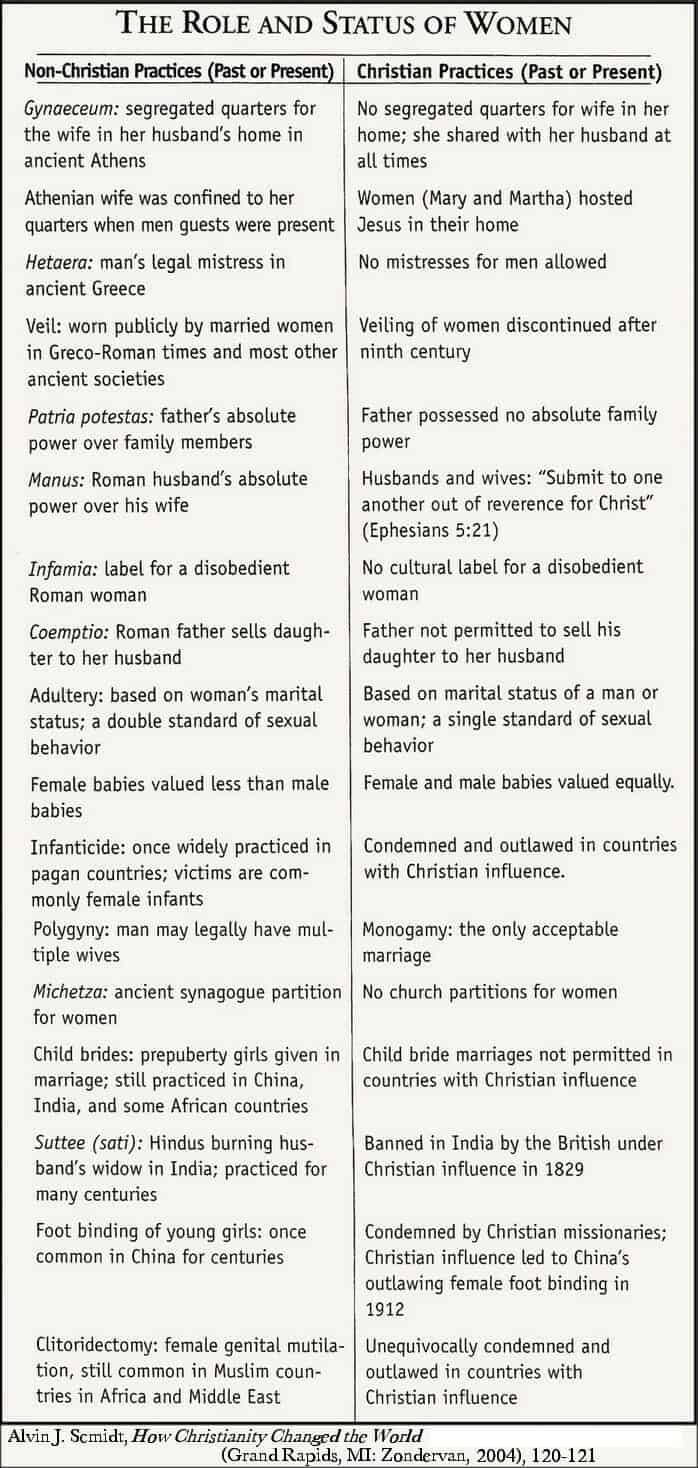
Back to Text
